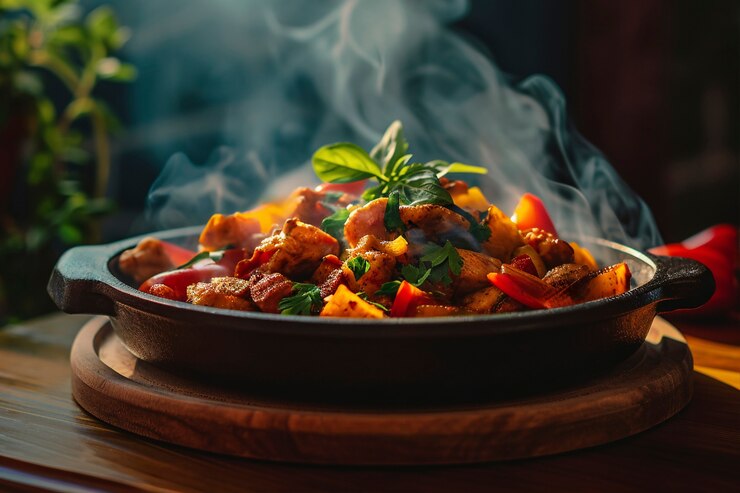Cassasse vs. Other Traditional Dishes: What Sets It Apart?
Cassasse is not just a dish; it’s a celebration of culture and community. Unlike other traditional meals, which may focus solely on the ingredients or cooking methods, cassasse intertwines its identity with local history and customs. Each recipe tells a story rooted in the Caribbean way of life.
What truly sets cassasse apart is its versatility. While many traditional dishes stick to fixed recipes, cassasse evolves based on available ingredients or family traditions. You might find variations featuring seafood in coastal areas or heartier meats inland.
The preparation process also distinguishes cassasse from others like jambalaya or paella, emphasizing slow-cooking techniques that enhance flavors over time rather than quick fixes. This patience reflects the communal spirit behind sharing meals in Caribbean culture, making every bite an experience worth savoring.
Cassasse is a dish that holds a special place in the hearts of many food lovers. It stands out among traditional meals, offering unique flavors and cultural significance. This hearty meal reflects the history and traditions of its region, making it more than just food; it’s a celebration.
As culinary enthusiasts explore various cuisines, cassasse invites them to discover its rich heritage. The combination of ingredients and cooking techniques gives it an identity that’s distinct from other dishes. From savory aromas to vibrant colors, each aspect contributes to its charm.
Understanding cassasse means delving into its origins and variations across cultures. It’s not only about taste but also about stories shared around tables filled with laughter and memories. Each bite offers a glimpse into the soul of the community that created it.
Definition of Cassasse
Cassasse is a traditional dish, rich in history and flavor. Originating from the heart of various cultural kitchens, it embodies a blend of ingredients that tell stories through taste. This dish has several regional interpretations, each showcasing local flavors and cooking techniques.
At its core, cassasse typically features meat or seafood combined with vegetables and spices. The exact components can vary significantly depending on where it’s made. However, the essence remains the same: comforting warmth and an explosion of flavors that delight the senses.
Often served as a main course during gatherings or celebrations, cassasse is more than just food; it’s an experience. It invites people to share moments around the table while enjoying its hearty goodness. This communal aspect makes cassasse not only delicious but also deeply meaningful in many cultures.
Origin and Cassasse
Cassasse has its roots deeply embedded in the rich culinary traditions of the Mediterranean, particularly within coastal regions. Its origins can be traced back to rural communities that relied on local ingredients and seasonal produce. The dish reflects a blend of cultures influenced by trade and migration.
Historically, cassasse was more than just food; it represented a gathering point for families and friends to connect over shared meals. Each region adds its unique twist, making it a versatile staple across countries like Italy and Spain.
This dish is often associated with celebrations, showcasing the importance of community in culinary practices. As recipes have evolved over generations, they maintain a strong connection to their heritage while adapting to contemporary tastes.
Cultural Significance Cassasse
Cassasse holds a cherished place in the culinary traditions of its region. Often enjoyed during special occasions and family gatherings, it embodies the spirit of togetherness and celebration. The dish is much more than just food; it’s a symbol of heritage and cultural identity.
Many families pass down their unique recipes through generations, preserving not only flavors but also stories. Preparing cassasse often becomes a communal activity, where loved ones gather to share techniques and secrets that have been handed down over time.
This rich tapestry of tradition makes cassasse an integral part of various festivities. Whether at holidays or local events, it fosters community bonds while showcasing regional pride—a true testament to its cultural significance.
Ingredients and Variations Cassasse
Cassasse is a dish that showcases the beauty of simplicity. Its core ingredients typically include a mix of root vegetables, such as cassava and yams, which provide a hearty base. These staples are often complemented by fresh herbs and spices, bringing depth to each bite.
Variations abound across different regions. Some recipes incorporate protein sources like fish or chicken, enhancing the flavor profile while adding nutritional value. Others may introduce unique local ingredients that reflect cultural influences.
The cooking method also impacts ingredient choices. For instance, some prefer steaming their cassasse for a healthier option, while others opt for frying to achieve crispy textures. Each variation tells its own story through flavors and preparation techniques, making every dish truly special in its own right.
Preparation Process Cassasse
The preparation of cassasse is a delightful journey that begins with selecting fresh ingredients. Traditionally, this dish relies on starchy vegetables, often cassava or yuca, which are peeled and cut into manageable pieces. The quality of these ingredients plays a crucial role in achieving the authentic taste.
Next comes the cooking process. The chopped root is typically boiled until tender, then mashed to create a smooth consistency. Depending on regional variations, this base can be mixed with spices or herbs to enhance flavors further.
The prepared mixture can be shaped into patties or formed into a dough for various dishes. Whether baked or fried, each method brings unique textures and tastes to cassasse. This flexibility allows it to adapt and shine in diverse culinary contexts while maintaining its traditional roots.
Cassasse Cooking Methods and Techniques
Cassasse is traditionally prepared using a variety of cooking methods that highlight its rich flavors. One popular technique involves slow-cooking the dish in a pot, allowing the ingredients to meld together beautifully. This method enhances the depth of flavor while ensuring everything is tender and satisfying.
Another approach is baking cassasse in an oven, which adds a slightly crisp texture on top while keeping the inside moist and flavorful. Baking can elevate the overall presentation, making it an attractive option for gatherings or celebrations.
Some modern interpretations incorporate grilling or smoking techniques for added complexity. These methods infuse unique flavors into cassasse, creating a delightful twist on this classic dish while maintaining its traditional roots. Each technique brings something special to the table, showcasing versatility within this beloved recipe.
Related cassasse
Cassasse, with its rich flavors and textures, often finds itself alongside other beloved dishes. One such dish is the traditional ratatouille, a vibrant medley of vegetables that complements cassasse beautifully. The fresh ingredients in both dishes highlight the essence of rustic cooking.
Another related dish is bouillabaisse, a savory fish stew from Provence. This seafood delight shares common roots with cassasse, showcasing regional ingredients and culinary techniques that reflect local culture and history. Both are perfect representations of their regions’ gastronomy.
For those looking to explore variations of cassasse, consider trying it with different proteins or seasonal vegetables. Each twist offers a unique experience while remaining true to the original concept. These adaptations ensure that whether you stick to tradition or venture into creativity, there’s always something new to discover within this delightful dish.
Conclusion
Cassasse stands out in the culinary landscape with its rich history and unique preparation methods. Its blend of flavors showcases cultural influences that have evolved over generations, making it a dish like no other.
The ingredients used in cassasse tell a story of tradition and community. Variations from region to region highlight local produce and family recipes, enriching the experience for those who savor it.
As food enthusiasts explore traditional dishes worldwide, cassasse offers an intriguing journey through taste and culture. It invites everyone to gather around the table and share not just a meal but also stories woven into each bite.
FAQs
What is cassasse made of?
Cassasse typically includes ingredients like meat, vegetables, and aromatic spices. The combination can vary widely based on regional preferences and family traditions.
How does cassasse differ from similar dishes?
Unlike other traditional dishes, cassasse has a distinctive blend of flavors that sets it apart. Its preparation methods contribute to its unique texture and taste profile.
Is cassasse served with any side dishes?
Yes! Cassasse can be accompanied by rice or bread to soak up the delicious sauce, enhancing the overall experience.
Can I find vegetarian versions of cassasse?
Absolutely! Many variations exist that cater to vegetarian diets, using hearty vegetables and legumes as substitutes for meat.
Where did cassasse originate?
The origins of cassasse trace back to specific regions known for their rich culinary heritage. Each area adds its own twist, making every version special in its way.







